
The Life and Opinions of Tristram Shandy, Gentleman, also known as just Tristram Shandy, is a novel by Laurence Sterne. It was published in nine volumes, the first two appearing in 1759, and seven others following over the next seven years. It purports to be a biography of the eponymous character. Its style is marked by digression, double entendre, and graphic devices.

Thief of Time is a fantasy novel by British writer Terry Pratchett, the 26th book in his Discworld series. It was the last Discworld novel with a cover by Josh Kirby.
Frank Wynne is an Irish literary translator and writer.
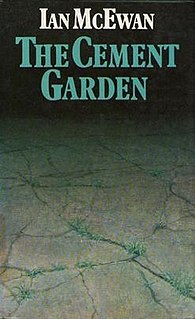
The Cement Garden is a 1978 novel by Ian McEwan. It was adapted into a 1993 film of the same name by Andrew Birkin, starring Charlotte Gainsbourg and Andrew Robertson. The Cement Garden has had a positive reception since its original publication.

The iceberg theory or theory of omission is a writing technique coined by American writer Ernest Hemingway. As a young journalist, Hemingway had to focus his newspaper reports on immediate events, with very little context or interpretation. When he became a writer of short stories, he retained this minimalistic style, focusing on surface elements without explicitly discussing underlying themes. Hemingway believed the deeper meaning of a story should not be evident on the surface, but should shine through implicitly.
Erma is a fantasy-dark comedy slice of life webtoon created by Mexican artist Brandon J. Santiago. The follows the adventures and misadventures of the titular six-year-old Erma Williams' experiences as a half-human, half-ghost, tending to use her haunting abilities for everyday antics, whether for better or for worse, focusing on themes such as friendship and acceptance. Santiago initially published the webcomic on DeviantArt and Tumblr in May 2014, but has since released it on various services from January 2016, such as Tapas and WEBTOON. It is available in two languages, English and Spanish. In January 2020, Comics Beat reported that with 64.5 million views and 74.9 thousand subscribers, Erma was the most-viewed webcomic on the Tapas syndicate in 2019.
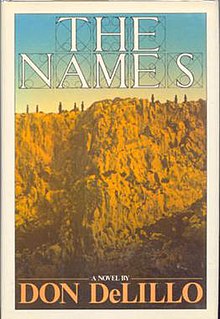
The Names (1982) is the seventh novel of American novelist Don DeLillo. The work, set mostly in Greece, is primarily a series of character studies, interwoven with a plot about a mysterious "language cult" that is behind a number of unexplained murders. Among the many themes explored throughout the work is the intersection of language and culture, the perception of American culture from both within and outside its borders, and the impact that narration has on the facts of a story.

The Child in Time (1987) is a novel by Ian McEwan. The story concerns Stephen, an author of children's books, and his wife, two years after the kidnapping of their three-year-old daughter Kate.

Kandanisseri Vattamparambil Velappan Ayyappan or V. V. Ayyappan, better known by his nom de plume Kovilan, was an Indian Malayalam language novelist and freedom fighter from Kerala. He is considered as one of the most prolific writers of contemporary Indian literature. In all, he had authored 11 novels, 10 collections of short stories, three essays and a play. Though the settings of his stories varied from military camps in frozen Himalayas to obscure village in Thrissur, he brought to bear a universal dimension on them transcending the limitations of space and time. Though initially he was branded as a writer of military stories, Kovilan soon proved that he looked at life with its varied dimensions. His works like Thottangal, A Minus B and Ezhamedangal reflected the existential dilemmas of human beings instead of depicting mere external situations and realities in a linear mode. But Kovilan received the highest critical appreciation for his later work Thattakam, a powerful and poignant portrayal of generations of people in his ancestral hamlet.

The Comfort of Strangers is a 1981 novel by British writer Ian McEwan. It is his second novel, and is set in an unnamed city. Harold Pinter adapted it as a screenplay for a film directed by Paul Schrader in 1990, which starred Rupert Everett, Christopher Walken, Helen Mirren and Natasha Richardson. The film is set in Venice.
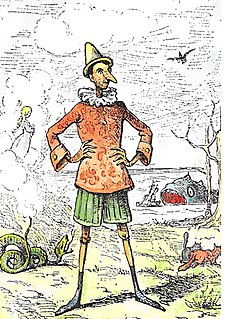
Literature broadly is any collection of written work, but it is also used more narrowly for writings specifically considered to be an art form, especially prose fiction, drama, and poetry. In recent centuries, the definition has expanded to include oral literature, much of which has been transcribed. Literature is a method of recording, preserving, and transmitting knowledge and entertainment, and can also have a social, psychological, spiritual, or political role.
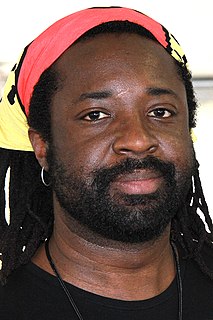
Marlon James is a Jamaican writer. He is the author of four novels: John Crow's Devil (2005), The Book of Night Women (2009), A Brief History of Seven Killings (2014), winner of the 2015 Man Booker Prize, and Black Leopard, Red Wolf (2019). Now living in Minneapolis, Minnesota, in the U.S., James teaches literature at Macalester College in St. Paul, Minnesota. He is also a faculty lecturer at St. Francis College's Low Residency MFA in Creative Writing.

Human trafficking in Southeast Asia has long been a problem for the area and is still prevalent today. It has been observed that as economies continue to grow, the demand for labor is at an all-time high in the industrial sector and the sex tourism sector. A mix of impoverished individuals and the desire for more wealth creates an environment for human traffickers to benefit in the Southeast Asia region. Many nations within the region have taken preventive measures to end human trafficking within their borders and punish traffickers operating there.

Cleopatra Confesses is a historical fiction novel written by Carolyn Meyer, part of her Young Royals series. Set in first century Egypt, the book is a biography of Cleopatra VII Philopator from age 10 to 22. Cleopatra faced rivalry between sisters, her father's exile, arrogant brothers, Julius Caesar, and a lot more. This book is recommended for ages 12 and up.
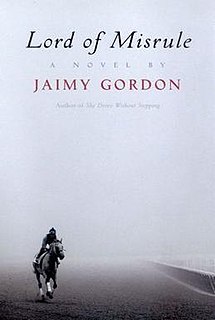
Lord of Misrule is a 2010 novel by Jaimy Gordon. The book is divided into four sections, each concerned with one of four horse races at a "down on the luck" racetrack.
Em and the Big Hoom is an English-language novel written by Jerry Pinto. The book won The Hindu Literary Prize, the Crossword Book Award, the Sahitya Akademi Award, and the Windham–Campbell Literature Prize.

Middle England is a 2018 novel by Jonathan Coe. It is the third novel in a trilogy, following The Rotters’ Club (2001) and The Closed Circle (2004). The novel explores the experiences of characters from those earlier novels against the backdrop of the major events taking place before, during and after the Brexit referendum.

An Orchestra of Minorities is a 2019 novel by Chigozie Obioma. It is his second novel after his debut, The Fishermen. It is a modern twist of the Odyssey and Igbo cosmology. The novel's narrator is a deceased spirit chi.
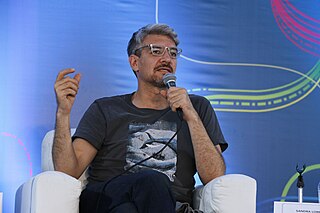
Emiliano Monge is a Mexican short story writer and novelist. Two of his novels, The Arid Sky and Among the Lost, have been translated into English.

















